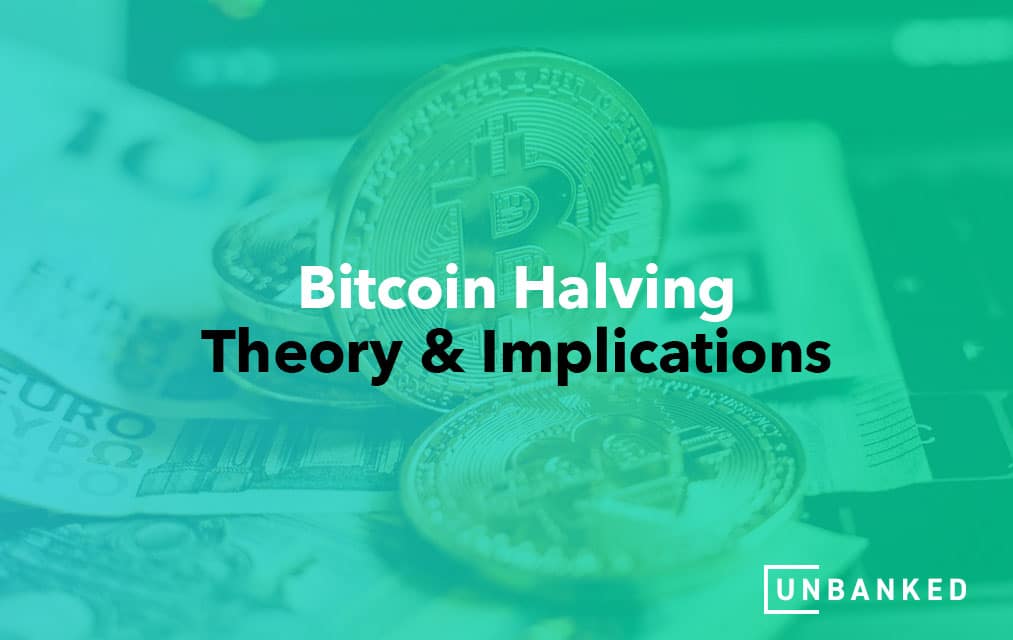Bitcoin Halving: Theory & Implications for Investors
Halving is a vital process in Bitcoin’s blockchain. It can help to induce inflation in the cryptocurrency’s price by reducing the number of coins in circulation. Along with that, it increases the demand for Bitcoin. While halving does have benefits, there are implications for all stakeholders in the cryptocurrency ecosystem.
Looking to learn more about the basics of Crypto? Check out our Crypto terms every investor should know.
Bitcoin Network
Before you can understand the Bitcoin halving event, take a look at how the network works. Bitcoin’s blockchain uses a collection of nodes or computers to operate the cryptocurrency’s software. On that network, it contains a partial or complete history of all the transactions. Every node is responsible for rejecting or approving a transaction in the network. The node will conduct a check to ensure these transactions are valid. These transactions must contain the proper validation perimeters, such as nonces. In addition to that, the transactions cannot exceed the required length.
All transactions are approved individually, which only happens after all the transactions in a block are validated. After the approval, the transaction will be added to the existing blockchain, allowing those transactions to be broadcast to other network nodes.
When there are more computers added to the blockchain, that can help to increase its security and stability. Today, there are currently 14,616 nodes in Bitcoin’s code 1. While anyone can participate in the Bitcoin network as a node, they must have enough storage to download the whole blockchain, including the history of all transactions.
Related: How to Invest in Crypto (Without Buying Cryptocurrency)
Bitcoin Mining
If an individual wants to participate in Bitcon’s blockchain network as a validator for the transaction process, they can start the process by mining. Bitcoin calls its system proof of work (PoW), meaning that the miners must prove their efforts to process the transactions. Without any evidence, Bitcoin will not reward them. Operating the computer hardware to solve those complex equations takes time and energy.
For many people, the term “mining” suggests that Bitcoin needs to be mined like a precious metal, but that is not the case. Mining Bitcoin requires the miners to solve mathematical problems that can confirm the legitimacy of the transactions. After that, the transactions are added to a block to create a chain of transactions, known as the blockchain. When the block is filled with those transactions, the miners will take that time to process and confirm the transactions. They are rewarded with Bitcoins for their efforts. Any large transactions will need multiple confirmations to ensure the security of the blockchain.
Many countries are starting to see the benefits of making Bitcoin legal tender. In 2021, El Salvador was the first country to make Bitcoin their legal tender. With that, you can use this cryptocurrency for any monetary transaction. Unfortunately, only a few businesses in the United States accept Bitcoin, but those numbers seem to grow daily.

Bitcoin Halving
Now comes the Bitcoin halving. After about 210,000 blocks are mined, or every four years, the block reward for Bitcoin miners to process transactions is cut in half. This process is called halving because it reduces the rate of new Bitcoins released into circulation. Bitcoin does this by halving to enforce synthetic price inflation until all coins are released. This rewards system is expected to continue until 2140, when the limit of 21 million Bitcoins has been reached. The miners will be rewarded with fees for processing those transactions at that time. The fees will still incentivize miners to work to keep the network safe and secure.
Every halving event is significant because it marks the arrival of newly produced Bitcoin. Remember that Bitcoin has an infinite supply of 21 million. As of 2022, around 18.8 million Bitcoins are left in circulation, leaving just 2.15 to be released for rewards.
Related: How to Sell Your Cryptocurrencies
Take a look at the history of halving. In 2009, each block mined in the chain was awarded 50 Bitcoins. After the initial halving, the reward dropped to 25 and then 12.5. By 2020, the rewards were only 6.25 Bitcoin per block. With halving, the price of Bitcoin makes it higher on the market.
Implications of Bitcoin Halving
When Bitcoin is halved, it reduces the release of new coins. In turn, that will lower the amount of the new supply while demand continues to increase. With that, there are a few implications for investors. Like other assets with a finite supply, such as gold, Bitcoin will have a high demand that pushes prices higher for investors.
When there has been a Bitcoin halving event, there has also been a massive surge in the cryptocurrency’s price. For the first halving of 2012, Bitcoin saw an increase from $12 to $1,200. By the second half, that epic fell to $647. However, in 2017, Bitcoin significantly increased, reaching a price of $19,800. Once again, the price dropped from this peak to $3,276 a year later.
The most recent halving took place on May 11, 2020. At that point, the price was $8,787. After that, the price soared to $64,507 on April 14, 2021. The price decreased slightly a month later, costing $54,276.
Halving and Its Effects
If you want to understand the theory of halving and the chain reaction in the network, it works like this:
The reward is halved – half the inflation – lower available supply – higher demand – higher price – incentives remain the same despite the smaller rewards.
If the halving event does not increase the price and demand, those miners would not have any incentives to work. All those rewards for completing the transactions would be smaller, and the value of the Bitcoin will not be high enough for the additional work.
In order to prevent any of these issues, Bitcoin has changed the process to change the difficulty of getting those rewards. If the reward was halved and the value of Bitcoin had not increased, Bitocin would reduce the difficulty of the mining. As a result, the number of Bitcoins would be smaller, but the transaction difficulty would be reduced. This process has been successful in the past. In the past, the result of halvings has ballooned in price but has been followed by a significant drop. With every crisis, there has been a gain in price. Yet, the prices of Bitcoin continue to be maintained at a higher level than before the halving events.
For example, the 2017-2018 crypto bubble helped raise Bitcoin’s value to a $20,000 price point. After that, it fell to $3,200. With that massive drop, the price before the halving event was about $650. While this system has worked in the past, halving is still surrounded by hype, market volatility, and immense speculation. It is almost unpredictable how the market will respond to these halving events in the future.
The world is unpredictable, as evidenced by the global pandemic. Additionally, investors have to worry about increased institutional interest in digital assets, heightened regulatory speculation, and celebrity hype. With these additional factors, the price of Bitcoin is left to be determined.
Related: Best Crypto Exchanges & Platforms
Bitcoin Halving and the Bitcoin Network
Since any Bitcoin halving is an anticipated event, there are significant effects on the Bitcoin network. Take a look at how Bitcoin halving can affect the network’s major talking points and stakeholders.
Investors:
When halving occurs, there is an increase in prices for the cryptocurrency because of surging demand and reduced supply. That is all good news for investors. In anticipation of the halving event, all trading of Bitcoin will also increase. But the pace of the price increases can differ based on the conditions and logistics of the price halving.
Miners:
The effects of halving on the mining ecosystem are a little more complicated. On the one hand, the diminishing supply increases the prices and demand. But with fewer records, it can make it difficult for small mining outfits and individual miners to survive in the current ecosystem. Many smaller miners cannot compete with the larger mining organizations. According to the past results, Bitcoin’s mining capacity is often seen as countercyclical to the price. When the cost of Bitcoin increases, the number of miners in the ecosystem decreases.
Any halving event is characterized by a price increase that will increase the probability of an attack on the network. Why does that happen? A halving event can cause about half the miners to move out of the network, making it less secure than before the halving event.

What Happens When Bitcoin Halves?
With halving, this term relates to the amount of Bitcoin tokens found in a newly created block. When Bitcoin launched in 2009, every block contained 50 BTC, but the amount was reduced by 50% every four years. Today, there have only been three halving events, and a current block contains only 6.25 BTC. When the next halving event takes place, the block will contain only 3.125 BTC.
The first Bitcoin halving occurred on November 28, 2021. But that was only after miners had already mined 10,500,000 BTC. After that, the next event occurred on July 9, 2016, and the latest happened on May 11, 2020. The following schedule halving event will occur in early 2024.
Today, the Bitcoin mining algorithm has a target of finding a new block around every 10 minutes. However, when more miners join the network, they add more hashing power, decreasing the time needed to find more blocks. Bitcoin can fix this problem by resetting the difficulty of the mining about every two weeks to help get back to that 10-minute target. The Bitcoin network has grown over the past decade, which means that the time to find a block has remained below 10 minutes.
Does Halving Have Any Effect on the Bitcoin Price?
The Bitcoin price has risen steadily since its first launch in 2009. At that time, investors traded the crypto time for pennies on the dollar. Halving a block reward will double the cost to miners. But it can positively impact the prices, with many producers adjusting their selling prices to meet their expenses. As previously mentioned, Bitcoin prices do rise in anticipation of halving, often happening about several months before the actual event.
Will the Block Run Out of Bitcoins?
It is estimated that around the year 2140, the last of the 21 million Bitcoin will be mined. At that point, the halving will cease, and miners will find no more coins. However, miners will not have to worry about any incentives. These miners will need to validate and confirm new transactions on the blockchain. The value of the transaction fees is expected to rise in the future. Those more significant transactions will always have fees attached, making Bitcoin have a greater value in the market.
The Bottom Line
With halving, Bitcoin imposes a synthetic price inflation into its network. The halving event cuts the rate at which new Bitcoins are released into circulation. This system will continue to operate until 2140, when the 21 million limits are reached. After that, all miners will be rewarded with fees to help process transactions. Any Bitcoin halving event can have significant implications for the network. Investors can expect a price jump months leading up to the halving. Unfortunately, Bitcoin halving can push out those smaller miners in the ecosystem.
The next halving event is not expected until 2024, but with this information, you can be better prepared for it.
Do you need help with investing in your cryptocurrency? Don’t leave those investments to the luck of the market. You need to speak to our team of experts. At Unbanked, we can provide you with a bit of guidance with your cryptocurrency investments. Contact us today!





